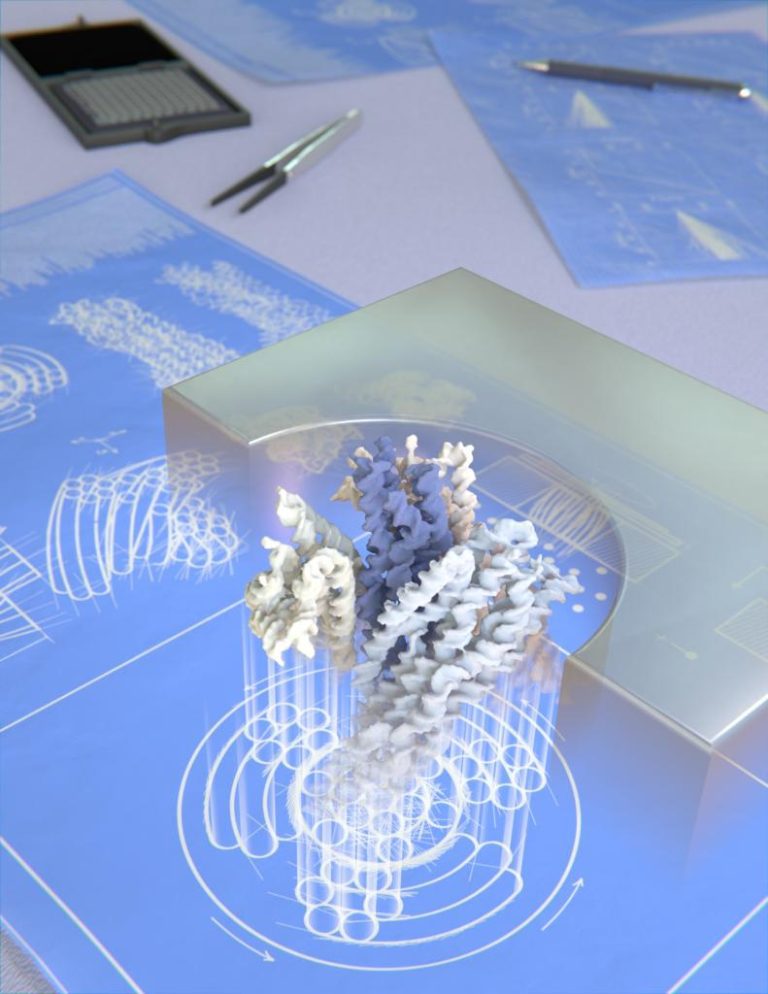Cees Dekker lab makes nanoturbine
A screw or a propeller has been a tool for moving water ever since Archimedes, and later also for moving through water. Researchers from the Cees Dekker Lab (Faculty of Applied Sciences) present the smallest propeller ever in Nature Nanotechnology on 26 October.
Both the shaft and the blades are made of dna strands, the whole thing rotates in a 25 nanometre hole in semiconductor material. The screw is about 30 nanometres long and bearing a rod of about 300 nanometres at one end. The propeller is only a hundred times larger than a single water molecule.

(Artist’s impression: Cees Dekker Lab / Scipix)
The nanoturbine is driven by a difference in electrical voltage or (sodium) ion concentration between the two sides. Dr Xin Shi, the first author of the paper, reveals that the little motor can reach twenty revolutions per second.
Last year, the authors already showed that they could rotate an S-shaped bundle of dna strands under the influence of voltage or a concentration gradient. Now the controlled shape of the turbine blade, the dna-origami, is the big step forward. The researchers can also provide the mirror-image version. Now that nanotechnologists have a turbine at their disposal, they can dream of powered nanomachines.
- In this research, the Cees Dekker Lab worked closely with the Hendrik Dietz Lab (TU Munich) for the shape of the turbine. Aleksei Aksimentiev (University of Illinois) calculated the molecular dynamics between ions, water and DNA, and Ramin Golestanian (MPI Göttingen) wrote the mathematical modelling. (JW)
Do you have a question or comment about this article?
j.w.wassink@tudelft.nl

Comments are closed.